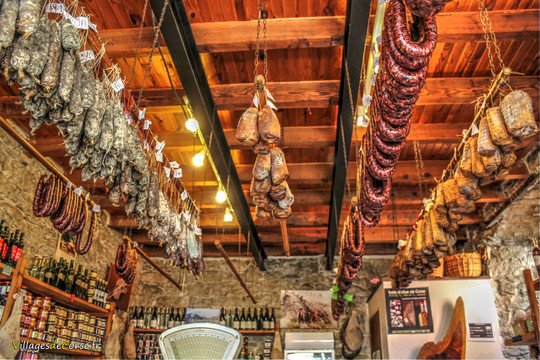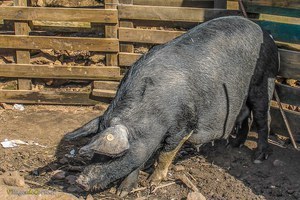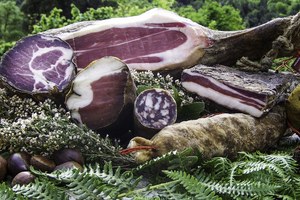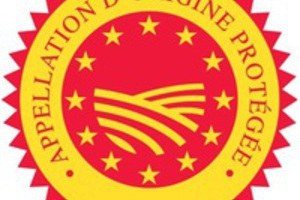- Activities
- Gastronomy
- Corsican charcuterie
- How to choose your charcuterie
How to choose your Corsican charcuterie?
Make up your own mind

Getting to the source by meeting breeders is still the best way to get an idea of a product, but there are a number of conditions: you have to be in the area, you have to hope that the breeder is there, and even if these conditions are met, between the laboratory, the point of sale and the farm, it's difficult to carry out a complete guided tour.
That's why, first and foremost, here's a list of authentic producers with their detailed pages, certified photos, their background and breeding and lots of other information at your service.
Pigs raised in Corsica
As the Corsican charcuterie label only requires that processing be carried out in Corsica, carcasses can be sourced from the mainland. This does not mean that their quality is compromised, but they are no longer pigs fed and raised in Corsica. The reason for using pigs from outside the island is that demand far outstrips the capacity of the island's traditional, non-industrial breeding farms.
The markers of good charcuterie
If you're not sure whether to buy charcuterie at a market or in a supermarket, in Corsica or on the mainland, here are a few markers to help you narrow down your choice:
- Quality does not mean quantity. The ubiquitous charcuterie that can be found in supermarkets all the way to the mainland cannot be the product of a single farm, which usually has around a hundred animals.
- Be a bit of a connoisseur. If you find figatellu between April and November, ask yourself some questions. It's produced exclusively in winter, starting in December, and its short shelf-life means it can't be kept all year round. Also, if you find any AOC charcuterie other than prisuttu, coppa or lonzu, something's wrong, as only these 3 are labelled.
- Trust your sense of smell. It may seem trivial, but a good smell of charcuterie that arouses the curiosity of your taste buds is a prerequisite. Corsican charcuterie has character, and no maturing cellar leaves the nose untouched.
- To the touch. The gesture isn't very hygienic, even though it's widespread in supermarkets. It's not a matter of feeling around like a piece of fruit, but with a few squeezes of the fingers, cured meats such as lonzu, coppa and panzetta should have a minimum of firmness, be neither soft nor malleable, and have no air holes between the skin and the edible part.
- Taste if possible. As cured meats are above all a personal experience, some prefer them dry, fatty, spicy - in short, it's also a matter of taste.
Finally, if you'd like to learn more about cured meats on a product-by-product basis (coppa, lonzu, figatellu, sausage), you can take a detailed look at all Corsican cured meats in the Learn More section, which will help you visually recognize a good coppa or figatellu, among others.
Fatty or dry cured meats?
You'll find a variety of sausages, coppe and lonzi from the same producer, with different degrees of maturation, different sizes and thicknesses, different colors and simply different preparations. We must not forget the dimension of the charcutier's trade. All charcuterie producers have their own recipes, often handed down from generation to generation, to which they sometimes add their own personal touch, such as the incorporation of spices or aromatic plants.
Porcu nustrale charcuterie at any price?
Porcu nustrale is a guarantee of the breed and therefore the typicality of the charcuterie, but it is not a guarantee of superior quality. Many farms have pigs with varying degrees of cross-breeding, and therefore possess a certain genetic set of porcu nustrale. Some pigs don't fit into the porcu nustrale breed criteria because their coat is too light, their snout not long enough, or other physical traits are different. However, they evolve and feed in the same way.
To sum up, this criterion has its dimension, but you shouldn't focus on this point alone, especially if you're in a region of Corsica that doesn't have a 100% porcu nustrale breed, as charcuterie is first and foremost the result of the charcutier's work.



